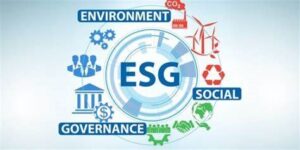Earlier this month (December 2024), the New Jersey Economic Development Authority (NJEDA) published municipality opt-in documents to participate in the Garden State Commercial Property Assessed Clean Energy (C-PACE) Program.
C-PACE is a program that has been adopted in 38 states and the District of Columbia and allows commercial property owners in Participating Municipalities to access a new form of financing to undertake energy efficiency, water conservation, renewable energy, and resiliency improvements. Typically loan proceeds approximate 30% of the stabilized value of the project (i.e., a higher value to base proceeds on that merely just hard costs). Moreover, while typical commercial lenders were initially skeptical of allowing C-PACE lenders to have “soft” second positions in their deals, most regional and national lenders have come around to the program and realized that because the C-PACE lender is not permitted to accelerate their loan for non-payment, the risk of a foreclosure by the C-PACE lender is quite remote.
C-PACE financing is typically non-recourse, does NOT involve a payment guaranty or completion guaranty and does NOT involve filing a mortgage on the property. The term of the financing is often 25 years (not the amortization period, rather, the actual term of the loan) and the interest rate is derived using the 10-year Treasury not SOFR plus a spread.
The Garden State C-PACE Program allows property owners to repay investments from Qualified Capital Providers (i.e., Lenders) into eligible projects through a special assessment to a Participating Municipality, similar to the owner’s real property tax, sewer, or water bill. The Participating Municipality then remits the payment to the initial capital provider. This unique form of financing can result in lower-cost, longer-term financing, making it easier for projects to be cashflow-positive from the outset. In other words, property taxes are incrementally increased and used to pay back the C-PACE lender over the 25-year term.
As such, NJEDA has finally published relevant opt-in documentation for any municipality in NJ that is interested in allowing C-PACE financing in their town. Under the rules, municipalities are required to first adopt the Opt-In Ordinance prior to submitting an application for participation in the program to the NJEDA.
According to the NJEDA website, applications will open shortly and will be accepted on a rolling basis.
Green Spouts: After passing legislation over 3 years ago, NJEDA has finally moved forward to issue applicable regulations to implement the legislation. Now interested municipalities will need to opt into the program. It will be curious to see how this information is shared with the 566 municipalities in the State of New Jersey and how “easy” the process is to opt in. Only time will tell but for developers and owners looking for financing or refinancing on projects, this could not come too soon especially given that all surrounding states to New Jersey have had this C-PACE arrow available to projects for years.
Duane Morris has an active Sustainability Team to help organizations and individuals plan, respond to, and execute on your Sustainability and ESG planning and initiatives. For more information, please contact Brad A. Molotsky, David Amerikaner, Sheila Rafferty-Wiggins, Jeff Hamera, Jolie-Anne Ansley, Robert Montejo or the attorney in the firm with whom you are regularly in contact.

